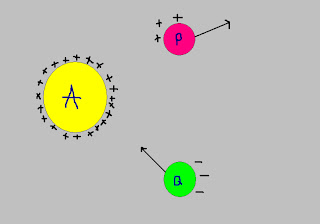Friction Force
Basic Theory :
Try pushing a cardboard box on the floor! When you push the cardboard there is friction between the surface of the cardboard box and the floor. The frictional force will hinder the movement of cardboard. The power of resistance due to friction is called friction. Thus, friction is a force that causes resistance when two surfaces touch each other.
equipment :
-surfboard
-marbles
-HVS
-fabric
-sandpaper
-playdough
-carton
-sand
A. goal of experiment : Comparing the movement of objects on different types of surfaces.
A. goal of experiment : Comparing the movement of objects on different types of surfaces.
Procedureof experiment :
1) Prepare a skateboard
2) Launch marbles on top of the sled. Observe the movement of marbles being rolled
3) Cover the cardboard sled. Observe the movement of marbles being rolled
4) Cover with sand sled. Observe the movement of marbles being rolled
5) Cover with a cloth sled. Observe the movement of marbles being rolled
6) Cover sled with sandpaper. Observe the movement of marbles being rolled
7) Record the results of observations
B. Goal of experiment : Enlarging and reducing the frictional force
Procedure of experiment :
1) Prepare a skateboard
2) Launch marbles on a skateboard. Observe the movement of marbles being rolled
3) Wrap marbles using paper and then launched. Observe and record your observations
4) Launch a cube-shaped dough on a skateboard. Observe the movement of the clay is rolled
5) Change the shape dough into a round and then launch. Observe and record observations








